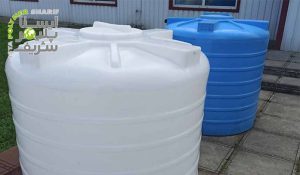An expansion tank is essentially a reservoir that balances the excess pressure caused by heated fluids and compensates for the water loss due to heat. There are different types of expansion tanks with various applications. It is worth mentioning that the absence of an expansion tank can lead to the risk of bursting and explosions, even if a safety valve or a relief valve is present. You still need an expansion tank. The expansion tank must be monitored and checked to prevent damage to pumps and pipes. This article will explain the types of expansion tanks and their applications.
The Main Purpose of Installing an Expansion Tank
An expansion tank is installed in thermal systems for two main reasons:
- To reduce pressure
- To compensate for water loss
Types of Expansion Tanks and Their Applications
The types of expansion tanks can be classified as follows:
- Open Expansion Tank
- Closed Expansion Tank
Open Expansion Tank
This type of tank has direct contact with air, which is why it is named “open.” An open expansion tank is rectangular or cubic and made of galvanized steel sheets. Nowadays, they are also made of aluminum, which offers greater resistance to corrosion and decay. It is installed at the highest point of the building, with a rule that it should always be higher than the last heat exchanger to balance the system pressure well and prevent water loss. This type of tank is suitable for systems with low pressure.
How Does an Open Expansion Tank Work?
When the temperature and volume of the water in the heating system increase, the water in the tank rises and, due to environmental pressure, is transferred through pipes and facilities to other parts of the heating system, resulting in the desired pressure.
Advantages of Open Expansion Tanks
Open expansion tanks are low-cost and simple to maintain and service. They rarely require repair, and when they do, they can be repaired at a low cost.
Disadvantages of Open Expansion Tanks
They are not suitable for high-pressure systems and need to be installed on the roof, requiring piping. Due to direct contact with outside air, they are highly susceptible to rust and corrosion.
Closed Expansion Tank
Another type of expansion tank is the closed expansion tank. It has no contact with outside air, hence the name “closed.” A closed expansion tank occupies less space and is installed in the boiler room. It is suitable for high-pressure thermal systems. It features mechanisms like air cushions or gases such as nitrogen to provide the necessary pressure in the tank. The closed expansion tank consists of two parts: one containing inert gas and the other where circulating water enters. Based on its operation and the type of gas, the closed expansion tank is divided into two types:
- Adjustable
- Diaphragm
Adjustable Closed Expansion Tank
In this type, the water pressure is continuously measured and maintained at a constant level. The required pressure is supplied by a nitrogen gas cylinder.
Diaphragm Closed Expansion Tank
In this type, the required pressure is provided by a diaphragm plate.
Advantages of Closed Expansion Tanks
They work well in high-pressure systems, occupy less space, and require relatively less piping.
Disadvantages of Closed Expansion Tanks
They are costly, expensive to repair, and have complex maintenance and service requirements.






